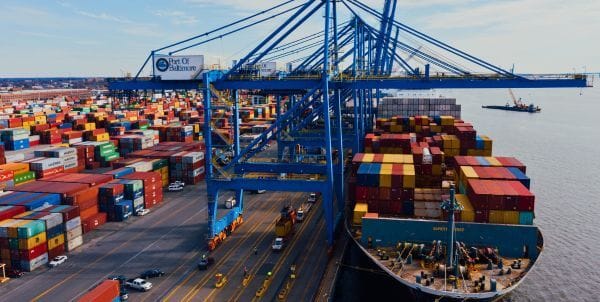- IncoDocs, Global Trade Newsletter
- Posts
- New US Port Fees – Who’s Paying and Why? 👀
New US Port Fees – Who’s Paying and Why? 👀
Welcome to all our new subscribers and a warm “Ahoy” to our loyal readers. Another new week, let's take a look 🔭
In today’s email:
More Fees: 🤯 US introduces port fees on Chinese built ships.
Off We Go: ⛵ History of the worlds major trade routes.
Up and Up: ⛏️ Gold surges to all time highs.
SHIPPING NEWS

New Fees at US Ports
In a major escalation of industrial policy, the U.S. Trade Representative (USTR) has confirmed a new port fee structure targeting Chinese-owned and Chinese-built vessels, aiming to bolster the domestic shipbuilding industry and counter China’s global dominance.
Key Details of the New Measures:
🛳️ Start Date: From October 14, 2025
💵 Fee on Chinese-owned/operated vessels: $50 per net ton of cargo, increasing by $30/year, reaching $140 by 2028.
🏗️ Fee on Chinese-built ships (non-Chinese owned):$18 per ton or $120 per container – whichever is higher. Rising by $5/ton and up to $250 per container by 2028
🚗 Non-U.S.-built vehicle carriers: Charged $150 per vehicle
📅 Frequency cap: Applied once per voyage, maximum 5 times per year per vessel
Exemptions Include:
Empty bulk vessels entering to load exports like coal or grain
Domestic U.S. and Caribbean trade routes
U.S. and Canadian vessels on the Great Lakes
This move follows months of trade tension and comes in lieu of the original proposal to charge up to $1.5 million per port call—an idea scrapped due to industry backlash.
While Washington hopes these fees reignite U.S. shipbuilding, Beijing warns they’ll simply raise costs for American consumers without reviving the industry. As global trade recalibrates, port policy is quickly becoming the newest front in U.S.–China economic rivalry.
TOGETHER WITH IGNITION
Struggling with late payments?
Learn proven strategies to speed up cash flow and ensure you get paid on time. Download this free guide and take control of your revenue today!
VIDEO OF THE WEEK
Trade Routes That Shaped History – Explained with a Map
In this video, we’ll explore the fascinating evolution of the world’s major trade routes—tracing their development from the ancient Incense Route all the way through to modern global trade networks.
TRADE NEWS

Gold: A Hedge Against Global Instability
Gold has broken through all-time highs, and the reasons run deeper than just inflation. Investors worldwide are seeking shelter in gold as a flight to safety — a move fueled by rising geopolitical risk, economic uncertainty, and mounting tariff tensions.
In times of instability, gold plays a critical role as a store of value. But in today’s climate, its appeal is turbocharged. Ongoing conflicts, inflation fears, and slowing global growth are pushing capital into hard assets. Central banks are also driving demand — particularly in emerging economies — as they increase gold reserves to reduce reliance on the U.S. dollar and shield themselves from financial sanctions.
Another major factor is the escalating trade tensions. New and proposed tariffs — especially between major economies like the U.S. and China — are shaking confidence in global supply chains. These trade restrictions raise costs, disrupt sourcing, and inject uncertainty into long-term planning. As businesses and investors anticipate slower growth and more volatile markets, gold becomes a logical hedge.
Interest rate uncertainty only adds to the mix. With diverging central bank policies and questions about future cuts, traditional investments are less predictable — and gold stands out as a stable alternative.
For global traders, rising gold prices aren’t just a financial trend. They’re a signal. They reflect a world hedging against volatility — from tariffs to conflicts — and a reminder to reassess currency exposure, supply chain risks, and broader strategic positioning.
Here’s Why Over 4 Million Professionals Read Morning Brew
Business news explained in plain English
Straight facts, zero fluff, & plenty of puns
100% free
CLIPS ON ‘X”
Cow milk production per country
📹VGraphs
— Science girl (@gunsnrosesgirl3)
9:37 AM • Apr 23, 2025
LETS MEME

Was this email forwarded to you? Subscribe here for update


